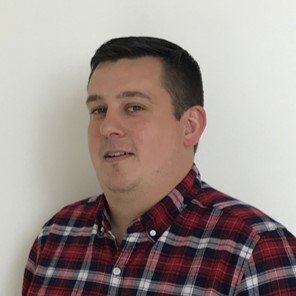Executive summary
Fintech innovation continues to transform all kinds of business sectors, from banking and lending to travel and retail, to hospitality and even app-based food delivery. New convenient ways of completing and managing financial transactions are geared both to creating efficiencies, and to delivering fresher and more embedded and seamless financial experiences, which boost customer loyalty - and customer value.
Challenger banks and fintech startups typically have an advantage over established banks and building societies, being less encumbered by convoluted processes and complex legacy IT estates. This means they can move more freely in creating the kinds of experiences customers want, keeping pace as their needs and expectations evolve.
But even young and dynamic financial service (FS) innovators can come up against hurdles as they strive to offer customers more. For organisations without banking or payment licences, some element of partnership will always be required. And there is always a trade-off between doing one thing very well and trying to satisfy multiple customer needs.
Up to now, banks have retained customers by being the safe all-rounders, while challenger providers have filled the gaps in great customer experiences – making particularly cumbersome transactions lighter and more accessible, for instance. To keep offerings feeling enticing and invaluable, digital-first financial providers need to be able to continue thinking outside of the box and bringing new functions and features online.
But how well does their set-up allow for that, without costly additional development or a reworking of current software? New payment-related experiences might include new anti-fraud payee confirmation during outbound payments; integrated payment initiation services within a single app; and immediate payment reconciliations and refreshed account balances at whatever time of the day or week. But how easy is it to incorporate these kinds of features, let alone do so in a way that’s superior to potential rivals?
There is a further challenge facing non-bank innovators, too, and that’s how to monetise their services. Having won over banking customers with their more competitive rates (made possible thanks to lower operational overheads), and/or a better or more tailored range of account management features, the new breed of app developers/embedded financial service providers must find ways to turn those customers into profitable revenue streams.
If the digital innovator sits outside of the financial world, and is coming at financial services as part of a broader brand experience (retail, hospitality, employments services, travel), the goal might be to offer a branded account or dedicated spending card. This creates scope to increase customer ‘stickiness’ by making it easier for those customers to view, monitor and manage a particular type of spending all in one place, while the business can reduce costs by owning the financial operations - rather than reselling third-party solutions.
But how can they connect in these kinds of capabilities, especially if they have cumbersome legacy IT systems (which is likely to be the case for a well-established organisation)?
Even with the most complex internal systems and processes to work around, there are tools that established brands can draw on today to deliver the new experiences customers expect. By harnessing these capabilities, all kinds of FS-linked service providers can innovate and grow their income, just by making it easier for customers to achieve what they need to.
Drawing on the latest best practice of digital FS innovation leaders, and first-hand insights into what’s possible, this second eBook in our series distils some invaluable recommendations to help fast-track new customer innovation for those organisations coming at the opportunity from a non-banking background.
Introduction
Drawing on the latest best practice of digital FS innovation leaders, and first-hand insights into what’s possible, this second eBook in our series distils some invaluable recommendations to help fast-track new customer innovation for those organisations coming at the opportunity from a non-bank background.
We’d like to thank the interviewees for their time and comments.
Key issue 1 – Legacy Technology
A company’s current IT set-up will always have a bearing on its ability to innovate and move nimbly. In the financial services industry, although traditional banks and building societies may face the biggest challenges in this regard, many challengers and brands external to the sector (those seeking to extend their offering with streamlined/ own-branded payment services) are likely to face their own practical hurdles.
Even startup and scale-up companies may struggle to bring new features and services online, because of the closed or one-track approach they have taken to IT up to now. To move lightly, and maximise efficiency and profitability from any next moves, they may need to rethink the way they connect in new capabilities and operate them in a sustainable yet scalable way.
Strategically, the goal is to build and increase customer attraction, loyalty and profitability, without substantially increasing operational costs. This will have a bearing on how the company approaches the creation and delivery of new functions and features.
Take payment processing – a popular target for service innovation, as app-led industry disruptors show the market what more instant and traceable payments could look like. Delivering innovation in this area requires round-the-clock, real-time payment processing and account balancing.
The experiences of Curve illustrate the burden of legacy technology along the established FS supply chain, even though the company itself started as a green-field business just a few years ago.
Curve provides a payment card that aggregates multiple payment means through its accompanying mobile app, allowing a user to make payments and withdrawals from a single card. (It lets the user switch the bank card they paid with once a transaction is complete.)
“We are a platform and we link into banking infrastructure,” explains Nathalie Oestmann, Curve’s Chief Operating Officer. Our solution adds tangible value for our customers, but when we’re integrating with a bank - or if I'm integrating with Open Banking - then we hit legacy infrastructure and that does slow us down a bit. Our technology addresses this, but it is an issue we come up against.”
The more ambitious FS innovators are to transform customer experiences, the more they need to be able to overcome incumbent bank ecosystem-related challenges. The ability to embed features such as Confirmation of Payee (CoP) and integrated Payment Initiation Services (PIS) within customer-facing web sites or apps is likely to play an important part in delivering enhanced end-to-end payment experiences.
Key issue 2 – Hidden costs of inefficiency
Traditional consumer brands continue to attract and keep customers because of the trusted relationships they have developed over many decades. It’s what banks and building societies have relied on over the years – and so have all kinds of other long-established businesses, from retailers to employment and accounting service providers.
Yet, as ‘digital native’ customers come of age, and as FinTechs continue to disrupt markets with handy consumer-friendly apps for managing and tracking their money, these established players cannot count on that loyalty persisting indefinitely. They need to work harder to maintain their ownership of customer relationships and FS-related revenue streams, by reinventing the customer experience and making the flow of money and associated notifications more embedded and seamless.
Right along the FS value chain, everyone needs to work harder to differentiate their offerings and add value for customers, via slicker processes that are more cost-effective to run (allowing greater scope for improved rates and offers) and more convenient and attractive for customers to use.
Says Nathalie Oestmann at Curve: “Where larger established players may be a one-stop-shop for everything, they may not be the best priced, offer the best experience or actually meet customers’ specific needs – which is where fintech players come in. We see the re-bundling of customers’ finances with different players as a very important trend, and momentum is growing around it.”
As services are broken up, and each player competes to be the most convenient and easy to deal with, the pressure increases for service providers to be very efficient in their delivery of those services – again putting pressure on IT and the way everything interconnects to allow secure data sharing and real-time transaction transparency.
Trying to deliver a smooth end-to-end experience across a jumble of mismatched IT systems and highly manual processes equates to unsustainable costs. These include considerable hidden expenses linked to manually tallying payments, and responding to customers’ queries (as they get in touch to see why payments aren’t yet appearing, for instance).
“When it comes to payments innovation, a frictionless experience is a given for customer satisfaction now,” says Giuseppe Caltabiano, Co-Founder & CEO of prize-linked savings app startup EverUp. “Everyone expects financial transactions to be reflected in real time across all financial products. Not just payments themselves, but also mortgages, loans, investments, insurance products, etc.
“That has become the expectation: the same type of treatment; the same type of frictionless experience; the same type of user interface as when you use other services in the consumer space. It means you need payments and the associated systems embedded in your infrastructure. Otherwise you will incur costs linked to the inefficiency in your processes.”
An independent survey of 200 decision-makers across a broad spectrum of financial service providers, including those outside of the core industry, found that overcoming such issues can help drive significant improvements to customer satisfaction, boosting business performance improvement by 14%.
Key issue 3 – The accelerating shift to digital payments
As digital payment volumes continue to soar, the momentum behind advanced payment processing capabilities is intensifying.
The pandemic has accelerated the shift, as more commerce has moved online and customers have been unable to make physical payments or visit banks and building societies in person.
As consumers have dealt with more aspects of their lives online, the ability to view, manage and trust digital payments across a broader range of service and retail interactions has grown in importance too. An accelerated shift to a cashless way of managing everything from parking to buying takeaways has emerged, and this has increased the importance of being able to see those payments reflected quickly and reliably across payer and recipient accounts.
During the first six months of the pandemic in 2020, the trend towards digital and instant payments was boosted ‘significantly’, according to a global payments report from McKinsey. The report, published in October of the same year, found that the crisis had compressed half a decade’s worth of change into less than a year—and in areas that are typically slow to evolve, including payment operating models.
“People don't want cash,” says Steven Parker, CEO of crypto wallet company Crypterium. “We’ve seen contactless payments soar during the pandemic, and the limits on the values of those transactions are rising - to £100 [at time of interview]. This would have triggered all kinds of concern a few years ago because of the potential for fraud. But, circumstances - and the maths - have changed.
“There’s the growing expectation, too, of being able to do everything without having to go into a bank branch: people are realising they really don’t need to, and actually that they no longer want to. Digital is changing every industry, and Covid has accelerated that several-fold.
“As a result, we see digital money apps, which offer an easy mobile experience, growing rapidly. Customers no longer want to persevere with the inefficiency and cost of traditional providers, when they are able to send money to a friend or cross border - with just a couple of taps - as with the services we provide.”
At the front end, in direct experiences with retailers and service providers, customers have welcomed the convenience of accelerated and increasingly seamless payment-related experiences. These include the ability to pre-fill order forms with PayPal payment and delivery details; split payments over time using a fintech service like Klarna; or to donate to charitable causes directly from within social media pages.
As the world tentatively resumes travel, and as more people go back to work, having access to a wider range of payment options, payment traceability, and 24/7 self-service update options, will be appreciated by customers keen to track and manage their money closely.
Some sectors are so committed to improving the customer experience along these lines that they have made big changes to their payments infrastructure to support this innovation, a large part of which includes automating manual payment processes. Any brands or service providers that feel they don’t currently have the bandwidth or budget to consider major change right now, must weigh up the risk of disappointing customers if they don’t keep pace with evolving customer experiences elsewhere in the market.
“Initiatives like Transport for London in the UK accepting contactless payments encouraged a different way of thinking, and COVID has now further accelerated that,” notes Nathalie Oestmann at Curve. “Now we’re seeing mobile payments, wearable payments as standard, and common along with contactless payments.
“One trend I wouldn't take my eye off is the use of QR codes. In between the big lockdowns in the summer of 2020, when we went to restaurants and clubs in the UK, we started to see QR codes to bring menus up on the customer’s screen so that venues didn’t have to hand out physical menus. I believe this trend, of digital experiences even in physical settings, will continue.”
In a still-remote context, innovation is continuing a-pace, too.
“The reality is that things are changing really, really quickly,” says Charles O'Neil, CEO of CoinMode, a high-frequency, low-latency payment system designed for the computer games industry. We’re starting to see value transfer mechanisms being built into communications applications – trials of bitcoin wallets within WhatsApp, for instance. And micro-transactions will become more cost-efficient and practical. And of course we’ve already got virtual debit cards (on people’s phones).”
Speed of payment processing is a major area of innovation.
“One of the key changes we're very excited about is Ffaster paymentsPayments,” says Corinna Lamberti, VP of Product at savings and investments platform provider Chip. “Open Banking has enabled instant payments, triggered by the customer. And this is huge - because speed in payments is key for building customer trust. The knowledge that deposited money is there instantly is super important for our users. Not having to wait multiple days for the money to be accounts to update, will be a game-changer – and a huge win for us.”
To capitalise on this potential and deliver instant, value-added services for customers, Chip harnesses strategic partnerships to connect to the facilitating technology and data that enable and provide visibility of payments as they happen.
“This means we can understand, very quickly, if there's anything wrong with any of the customer transactions, act on that information swiftly and provide really good customer service, supporting them in the right way,” Corinna Lamberti explains.
The ability to connect into the latest technology and data via Open Banking and open APIs (application interfaces) is proving transformational for any FS provider which wants to be able to move deftly and extend new experiences to customers, without incurring new operational overheads.
3s.money is a bank financial services challenger that enables corporates to accept and manage bank transfers in foreign markets. Co-Founder and Chief Finance Officer Andrei Dikouchine believes that standardisation of banking APIs hold the key to future innovation for managing and monitoring cross-border transactions, once these are easier to plug into.
“Everybody's talking about APIs, but currently they all come in such a random form and shape that it's still more of a bespoke product with costly integration rather than something that can be deployed easily,” he says. “Taking an analogy from my background in telecoms, what really unified the world was GSM. Once the standard was adopted globally, national mobile networks were able to host foreign SIMs without issues. That’s the experience customers want in the banking world. Fix that, and APIs are definitely the way forward.”
Nathalie Oestmann at Curve agrees.
“I think APIs are one of the greatest inventions of the past decade,” she says. “They allow for easy insertion of new features. A well thought-through API is incredibly simple to integrate, requiring minimal lines of code. With Open Banking in the UK, there's one API for numerous banks and their numerous legacy systems. That's been a fabulous introduction to overcoming legacy obstacles. So we are finding ways to overcome what may exist in the financial services industry, particularly with companies that have been around for more than 10 years, and the future looks very bright for customers because of that. It smooths the path for what we’re doing, and others like us.”
5-point plan to fast-track payments innovation – advice from our interviewees
Whether you’re a fintech looking for a fresh take on consumer savings and investments; an employment services company looking to revolutionise staff payments and benefits management; or a retailer/hospitality company looking to offer a branded loyalty card or customised payment account, it can help to understand the successful approaches of fintech leaders when mapping out your next steps.
Here are some insider tips for non-bank FS innovators, distilled from the c. 50 financial services leaders we interviewed:
1. Don’t rest on your laurels: keep pace with the latest market demands.
What excites the market today may be old hat by tomorrow, so keep pushing boundaries and striving towards the experiences customers will want and expect in the future.
Our interviewees suggested non-bank FS innovators should consider what kinds of payment innovation would give your brand its next competitive edge, for instance. New payment services could translate into new streams of income. New entrants, for example, are winning business with strong savings propositions which give customers a clear view of all their money by offering handy services, such as sweeping out loose change to form incidental savings.
If existing technology restrictions, or fear of regulatory complexity/compliance issues, are presenting a barrier, consider the impact of competitors getting ahead with their payments innovation and be prepared to think about the opportunity differently. One proven approach is to tap into a managed service that takes care of all of the technology and the regulatory logistics, freeing up your team to focus on customer service innovation.
“We're lucky enough to be quite independent in the way that we work, and to use a lot of new technologies and new ways of working. Our entire app is based on Open Banking. Without this, we wouldn't be able to exist as a business. Yes, we depend on traditional banks to share data with us, but thanks to changes by the regulators, and on the side of innovation and technology, it’s become possible for companies like ours to exist in this environment.”
- Corinna Lamberti, VP of Product, Chip.
2. Look laterally for inspiration.
For those outside of the FS sphere, spotting an opportunity to bring payments more integrally into their world, don’t hesitate to look laterally for scope to add new value, our interviewees agree.
Consider the example of the accounting software provider Intuit. It identified the opportunity to integrate payments directly into its system, instead of relying on transposing these from bank data. It’s a more seamless experience for customers, a service differentiator and it presents a potential new revenue stream for Intuit.
From the customer perspective, using a solution that combines accounting and payment accounts with bookkeeping features allows businesses to manage the entirety of their finances from one destination - all from within the same accounting software they’ve historically run their business finances.
Services that connect established accounting software to payment accounts can better serve a business’s financial needs. As well as allowing accountants and business owners to manage their accounting and finances all in one place, these connected payments services make lighter work of budgeting for significant expenses (such as taxes and payroll) and ensure that bills are paid on time – thanks to a real-time view of the client’s cash position, making it easier to plan for a range of different scenarios.
If you’re a financial forecasting specialist, a property technology provider, or an employment services company, consider the potential to do something similar.
Work with a managed API-based payment tech and services company like Modulr, and make it possible to view and manage the movement of money all in one place. You’ll benefit from extended ownership of the customer, and your chance to command your own piece of the instant economy.
3. See opportunities, not limits
External factors, including the demands of the market, new regulations and increases in platform or third-party fees, are changing FS business models and payment ecosystems.
Many of our interviewees suggest looking for opportunity in this change. Identify the benefits of new financial service innovation for your customers, and your own internal business targets, and be ready to change quickly.
Progressing with payment innovation and automation presents a chance to be bolder and carve out budget for new endeavours or business models. Current accounts could serve as a vehicle to other more lucrative opportunities, for example, Payment Initiation Services (PIS), an area that’s evolving very quickly, could create new scope for customer solutions that promote regular savings.
Other opportunities include fast, efficient and traceable cryptocurrency trading/investment options, which can be a great way to draw in customers with attractive yields, underpinned by a partner that can provide a fast, efficient and traceable experience around this kind of proposition.
“We need to look at the new technologies, at emerging technologies - artificial intelligence, machine learning, blockchain and predictive analytics, where there will be huge advances. Basically, you will be able to package and design products that really remove pain for customers and/or pave the way for an era of hyper personalisation.”
- Giuseppe Caltabiano, Co-founder & CEO, EverUp
4. Consolidate your technology supplier stack, removing pain & complexity
To embrace new customer-centric experiences at speed, you’ll need to be able to connect to and consume real-time, API-based services. This will allow you to create new customer experiences with real-time orchestration, even if you have established systems you don’t want to replace or disrupt. Cloud-based API ecosystems, based on a microservices architecture, offer flexible building blocks to build out that brave new future.
But beware of creating new complexity, a number of our interviewees warned. Although Open Banking and Open APIs offer the chance to shop around and buy different capabilities from different specialists, this is likely to become costly and hard to manage. Look instead for a consolidated option that supports multiple capabilities across a single platform and set of APIs, with a single payment notification enabled by a single set of coding across all mechanisms – whether Faster Payments, SEPA, Bacs, direct debit or other means of payment processing.
5. Be bold in your thinking
Your innovation can only ever be as impactful as you designed it to be, so don’t be modest in your ambitions – especially given that the competition could be dreaming bigger.
A number of those we spoke to advised leaning on external experts that can translate your vision into something tangible and exciting for customers, which works and fulfils all regulatory requirements. That way you can keep reimagining and reinventing experiences and services through the customer’s lens, taking consumers/service users closer to where they need to be.
"Via a digitally-native format, we are encouraging people to save for their short-term goals through a gamified approach – by providing instant gratification to promote the desired savings behaviour. We are also building a saving and payment ecosystem underpinned by our prize-based platform. We believe that the more engaged people are about their savings and spending, the more likely they are to make good long-term decisions.” Giuseppe Caltabiano, Co-Founder & CEO, EverUp
Conclusion
In the instant economy, customers expect instant experiences with instant information and instant reconciliation of transactions. This is especially the case with payments.
For fintechs/digital FS innovators, the challenge is competing for second place in customers’ lives, after their core banking services. Whether competing with a better mortgage or ISA offering, or as a consumer travel/retail/hospitality brand with an embedded payment option, the onus is on those companies to use technology to deliver something slicker and better. Something that keeps customers coming back – and which draws in profitable revenue.
This means continuing to push boundaries and experimenting with new features and services, and instant payment options offer broad potential here.
At the same time, internal teams need to stay close to the business and the evolving needs of customers – not become embroiled in direct debit or payment processing logistics. Rather, innovation teams should stay focused on the creation of a seamless user experience via an efficient and attractive app; offering a competitive proposition that’s marketable on social media; and keeping shareholders happy.
For efficient realisation and speed of delivery of their next product innovation, look to API-enabled managed software-as-a-service (SaaS) solutions that will help you get to market faster with compliant offerings that set your brand apart in the market.
Certainly, links to an inflexible payment infrastructure or worries about regulatory detail should never be reasons not to push forwards with fresh ideas. In the digital age, it isn’t necessary to join a payment scheme directly, or invest in new infrastructure from scratch, to be able to create enticing new customer experiences that fulfil previously unmet needs. Simply connect into a world-class payment infrastructure via APIs, and let your vision take form.
About Modulr
Modulr is the fastest growing B2B payments company in the UK. Backed by global industry leaders including PayPal and FIS, Modulr’s Payments as a Service API platform enables businesses to automate payment flows, embed payments into their platforms and build entirely new payment products and services themselves. All managed in real-time, 24/7 from one API. Together with major partners Intuit (QuickBooks), Sage and Revolut, Modulr is leading the transformation of the corporate payments sector, making it faster, easier and cheaper to move money.
Based in London, Edinburgh and Dublin, Modulr has raised £63m to date. Investors now include Blenheim Chalcot, Frog Capital, Highland Europe, PayPal and FIS. Modulr Finance Limited (FRN: 900699) is registered with the Financial Conduct Authority as an EMD Agent of Modulr FS Limited (FRN: 900573). Modulr FS Limited is an Authorised Electronic Money Institution, regulated by the Financial Conduct Authority. Modulr’s Dublin-based entity, Modulr FS Europe Limited (FRN: 638002) is registered as an EMD agent of the Central Bank of Ireland.
Acknowledgements
This report benefits from the input of a number of fintech innovators who kindly shared their insights. We would like to extend particular thanks to those we have cited directly in this eBook, along with the numerous others who contributed more general insights towards the bigger picture.
Sources
https://landing.modulrfinance.com/customer-experience-hidden-cost-research
https://internationalbanker.com/technology/addressing-the-problems-of-legacy-banking-systems/













.jpg)


.jpeg)

.jpg)


.jpg)



.jpg)





.jpg)



.jpg)




